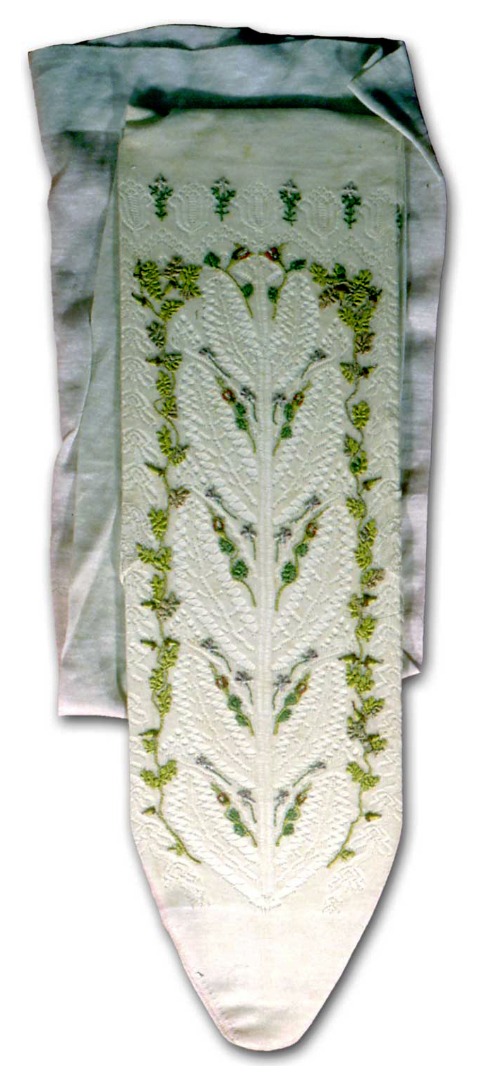Women at Work
Women played an important role from the earliest days of the knitting industry. While men operated the frames, women performed other tasks related to the knitting process.

Hand-embroidered stocking.
Generally they wound yarn onto bobbins, or seamed and finished the stockings. This division of work continued and evolved in the factories. High quality fully-fashioned work continued to be produced by men operating William Cotton machines. Women seamed, sewed and mended as before, and also took on new tasks. Many framework knitters considered the new circular machines and cut-up work an inferior part of the industry and this work was often undertaken by women.
Growth of female employment
Demand for cut-up goods continued to rise during the nineteenth century creating more knitting and sewing jobs for women. The Rogers & Black cut-and-sew factory in Nottingham employed hardly any men in the 1880s. Statistics show the growth of female employment throughout the nineteenth century. In 1851 30,076 of the 65,499 workers in the industry (45.9%) were women. By 1911 this figure had increased to 73.5% of the workforce, with 41,431 women employed out of the industry's 56,360 workers.
Quality work
Work undertaken by women was not always linked to the production of cheaper goods. The value added to goods by women workers in some sectors of the industry, was greater than that made by the men knitting them. High quality stitching and embroidery was a skilled task and added significantly to the costs of manufacturers. The accounts of William Ball & Son from the 1850s show that to manufacture a pair of fine silk gloves 8.6% of the costs were related to the knitter of the fabric, whilst 19% of the costs were paid for stitching and embroidery. In the 1830s, an estimated 150,000 women worked in hand embroidery in the knitting industry and wider textile industry.
Women in demand
New technology in the knitting industry further moved the balance of employment in the favour of women. Machines produced goods quicker and less manpower was required to operate them. The large number of goods produced still required several predominantly women-operated tasks to be undertaken. For every male employed in hand frame knitting, an average 1.77 women were employed. Where rotary machines were used the ratio was 2.3 females for every male. The ratio peaked in the favour of women for powered circular machines, where 11 women were employed for every man.
The demand for women soon started to create shortages and technology was used to make the most of the women available. Rows of sewing machines were connected to belt-powered systems within factories and were use by women to assemble cut-up garments. The Singer factory in Glasgow had, by the start of the twentieth century, developed a range of eighteen different models, designed to undertake specific tasks in the knitting industry. The Singer Handbook for the Hosiery Trade was regularly updated to provide manufacturers with guidance on how long tasks should take operators.